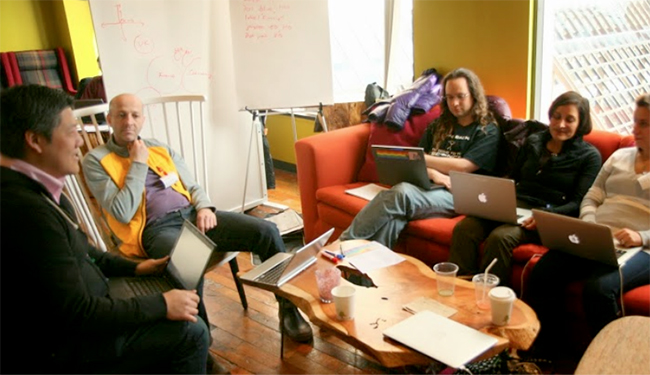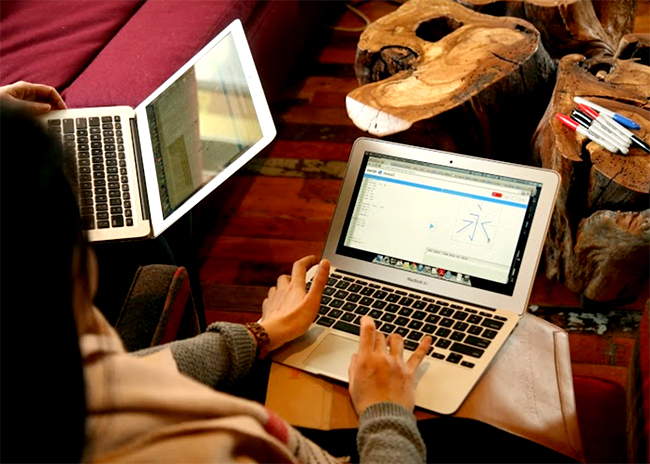On February 14, 2014, Beaver’s history department attended a hackathon at the Google offices in Cambridge. Below, Melissa Alkire, US History teacher and Tech Integration Specialist, shares her experience from the day.
By Melissa Alkire, US History | Tech Integration Specialist
Often when I discuss coding in the humanities, the response is, “Well isn’t that a bit forced?” And while to the casual observer it may appear so, coding is an excellent tool for history teachers — a fact that became even more apparent after I, along with the entire Beaver history department, attended the Pencil Code Hackathon at Google. Led by David Bau, creator of Pencil Code, the six-hour hackathon provided us with concrete ideas on how to incorporate coding more seamlessly into the classroom.
Our Cambridge Google “command center” was modern, cozy, industrial, and bright. While these may seem like superficial details, they were quite integral in keeping everyone comfortable and focused through the hackathon.
Before the event, David sent out a series of project ideas. Based on our interests and what we wanted to learn and take away from the experience, he divided the larger group of programmers and educators into teams. My team focused on designing ways for students to visualize data, using both basic and complex coding. We — me, Kader Adjout, Mike Adamowicz, and Geeta Jain — were paired with Colin, an engineer, who works on this concept at Google.

Starting with a big picture brainstorm, we threw dozens of ideas at Colin about what we would want to code. We narrowed down our big ideas into smaller, more manageable skill sets and went to work learning the code so we could better support our students in the classroom as they troubleshooted through similar data.
Although Colin was with us from the moment we wrote the first line of code, he didn’t do the work for us. He demanded high performance and collaboration, and he provided support only when necessary. In the end, the code was ours and it left us feeling empowered to transfer these new skills into our humanities classes.
Our group worked on the following projects:
- BubbleMap
- BubbleMap II
- BubbleMapIII
- BubblesInside
- ImportingImages
- TimelineImmigration
- ImportingVideo
My favorite project was ImportingImages — it’s the one I see as the most useful tool in my history toolbox — and I am excited to have students plot data on maps they create depending on their research, project parameters, and overall goals.
After spending dedicated time practicing coding, I left with a new appreciation for what coders do on a daily basis. (Oh and if this positive experience isn’t enough to convince you to try coding, let me add the lunch options provided at Google left us all pleasantly full and ready for our next visit!)

